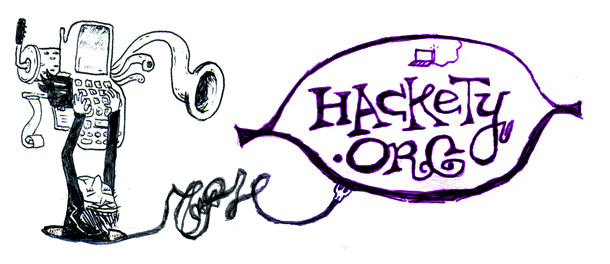How Are Those Guys Datamoshing?
Ignore the word datamoshing for a second, just like you ignore the word blog. I want you to tell me if this guy is a programmer. Certainly he’s a hacker of some kind. This isn’t a great video, but here’s a cam of part of Pink Dot by Takeshi Murata:
Dousing videos with compression artefacts is just burgeoning (and in a year everyone’s going to be sick of it) but I’m convinced Takeshi’s work will stick around a lot longer. Allegedly, artists can’t sit still in their seats during his shows and they dash home to dupe his style.
Some stills, to get a little closer to this:





I don’t want to talk about giving the guy credit, though. He’ll get credit since his work has longevity. There’s a myth and legend to his style and it revolves around the question: is he programming this stuff or what? Is he in control?
Kathy Grayson: (curator of a show he was in) Takeshi invented the technique of reprograming the way your computer reads video and compresses it to make the swirly pixel stuff you posted on your blog. It is not called “roundabout” or whatever your blog said, I mean maybe that is what Kanye calls it? Sounds retarded.
tootite4liph: (YouTube commenter, some friend of a friend) He turns the video files into to text. when the videos are in text form he manipulates them by deleting code etc. apparently he did a lot of commercial work so he was around tech savy guys and this is how he learned.
chadvonnau: (another YouTube commenter, extrapolating) Most modern video codecs are made up of keyframes and in between frames. The keyframes are full images, but the in between frames only record what has changed from the previous frame. When it’s working correctly, it creates the illusion of continuous sequential images, but with much smaller file sizes. Takeshi is manipulating this process in a way where he is arbitrarily inserting and removing keyframes, so that the inbetween frames (which represent motion) become the focus.
The truth of these quotes is totally dubious, but that doesn’t matter. Look how bewildered everyone is about his technique! He’s deleting code. Then he’s reprogramming the ways computers work. Then he’s converting VIDEO TO TEXT THEN BACK TO VIDEO! Yeah, that’s it!
Now, I hate to do this to you.
gneumatic: (taking notes during a talk by Murata) No significant use of code in Takeshi Murata’s work (other than automating simple tasks) – not sure if that makes me happy or sad…
It makes you sad! People want to believe he’s hacking. They want to think he’s away wizarding down in the assembler. The illusion is supported by the volumes of pixels and colors that seem to be acting in psuedo-random fashion. That guy must be god to go in there and ransack the machine and twist it as he pleases.
They all envy the hacker. Somewhere deep down in their EAX registers.
Now, before I let you go, here’s one other thing I want you to think about. Explain this one:
See, this guy is no one-trick pony.
Update: A guy on YouTube explains how to use ffmpeg and avidemux to do all this. And while it’s looking more and more like this is done by hand, you could get a bot to randomly stitch streams together this way.
It seems obvious now why this effect is so easy! Since still parts of the shots are wiped out by the lossy, you’re left with purely the motion. Bodies emerge from the effect naturally.


Now begin the comments …
Greg
It’s interesting how the motion in the two videos is actual kind of similar. The compression artifacts and that cool one-image-emerging-out-of-another movement really echoes the blobs but in a totally different way. That and the trick with the flashing colored circle which gets a third color because of how your eye sees the transition would suggest that he’s really interested in persistence of vision. Those compression artifacts are kind of like persistence of vision for the computer…
Also, whether or not his work is made by some kind of visual programming/hacking, it will soon be widely reproduced that way…
bie
makes me want to play circuit bent super mario brothers again
joem
As someone who’s been downloading all kinds of videos for at least 10 years, this technique is quite familiar to me. I always encounter it when I try to combine the 1st and the, let’s say, 4th part of a multipart video file. It doesn’t matter what part, just so long as a part is missing. My guess is that because chopping out a part of a video is so easy to do, there’s no need for him to be programming. Also, the video compression itself is quite complex, so while he’s in control enough to know how to start the compression artifacts, I highly doubt he controls exactly what they do. He probably tries it a few times and takes the one he likes.
Then again, this is all conjecture. Me, I can’t stand the effect… Brings back too many bad memories of corrupted video files.
joem
No idea about that last video, though. Handmade animation?
leaf
not to demean it, ’cause it sure is pretty, but that Tarpit video looks like it has about 3-4 seconds of unique motion, which is then extended with colour cycling; hand animated?
_why
I mean I agree that it’s likely a hand-animated loop, it’s not that: it’s the color cycling part. Like focus on the splash that appears on the left-hand side. First time it’s red. Then it’s yellow. Then it’s grey. And there’s no fading of colors, so it’s not like the image is just being gradually shifted from hue to hue. So was it colored by hand then?
If the whole thing was hand-done, then it’s still remarkable that it pulls off the appearance of a generative Game of Life.
subwindow
It isn’t exactly the same thing, but the video for Water Curses by Animal Collective (May ’08) seems to be very similar to this style. Plus, the song is awesome.
http://www.youtube.com/watch?v=h7GZLRxVzvg
mdaines
The guy on YouTube makes this sound pretty simple (at least conceptually), and amenable to an easier/more expressive, ‘programming’ way of doing things — just manipulate the “I-frames” and “P-frames” as you see fit to create the effect you want. If you want the motion-on-video effect, display one clip and then display the other, but without the initial I-frame. If you want the flowing video effect, duplicate a P-frame a bunch of times.
Perhaps something like VLC can be tricked into “datamoshing” live by feeding it the kind of frames you want at the times you want? I heard a related technique is used in iChat on OS X for video backdrops.
I definitely agree the name is gross, but I’m glad to see this effect codified in some way — it’s exciting because it’s kind of like the digital video equivalent of cutting and scratching — of course you can play video in loops at different rates but that doesn’t really make sense visually in the same way scratching makes sense with sound.
drg
Looking at that last video and the one on his homepage, I’m reminded of medical scans and level-set fluid simulations. Sounds complicated, but easily done using an industrial-strength graphics package like Houdini. Just generate a bunch of random points, group them, mesh them with metaballs, then slice using a boolean. Colouring could be using a voronoi algorithm, but more likely by hand. Repetition is easily handled in this approach as well.
Oh yeah, but he’s not some crazy whizzkid. Really? Is he an artist or a magician? Many effects artists prefer to think of themselves as the latter.
Zoasterboy
Awesome, I am going to try this effect.
Zoasterboy
Note: Yes, I also see that the second video is a loop with the blobs changing color. Look to the lower left for a unique blob that sprouts many smaller ones. It repeats, along with other things.
tieg
I hope someone makes a kung fu film with this technique before it burns out.
OMouse
I hope someone publishes an article or two on how to duplicate this technique. I hope this elitist artist lets his secret out so that the world can become richer with more displays of wizardry by ordinary mortals.
OMouse
interview with him: http://www.jess3.com/blog/2008/05/can-you-please-introduce-yourself-my.html
tizzdogg
david oreilly’s been doing this technique for a while:
http://www.davidoreilly.com/2009/02/datamoshing-is-so-over
its totally passed its prime now that kanye west has a video featuring it
OMouse
@tizzdogg: “It’s not a big deal that it’s now mainstream.” ah yes, I forgot that the art world was ruled by fashion now. A shame, that is.
zipthwung
I heard someone from LA say this was datamoshing so I looked it up.
I do find the idea of editing the video in ascii (text) and then opening it back up in the program an interesting and fun thing to do deliberately and not by accident – an to give someone credit as Cathy Grayson did, is dishhonest or clueless. Let the games begin.
Why is it artworlds are so eager to believe people “program” things instead of using After Effects?
Because they just dont know.
zipthung
and im totally going to rock this effect until I get beat up or make money or both.
fatso
This effects is now used all over the place, for instance in Chairlifts “Evident Utensils” (great song btw) or the latest Kanye West video.